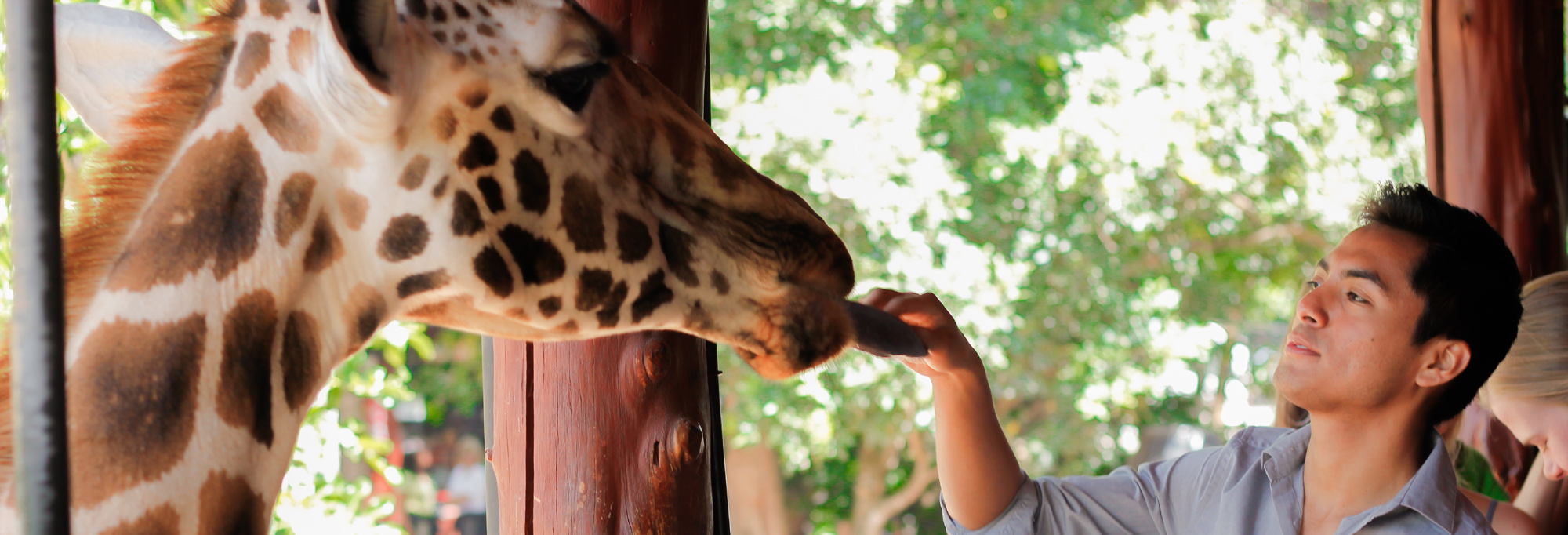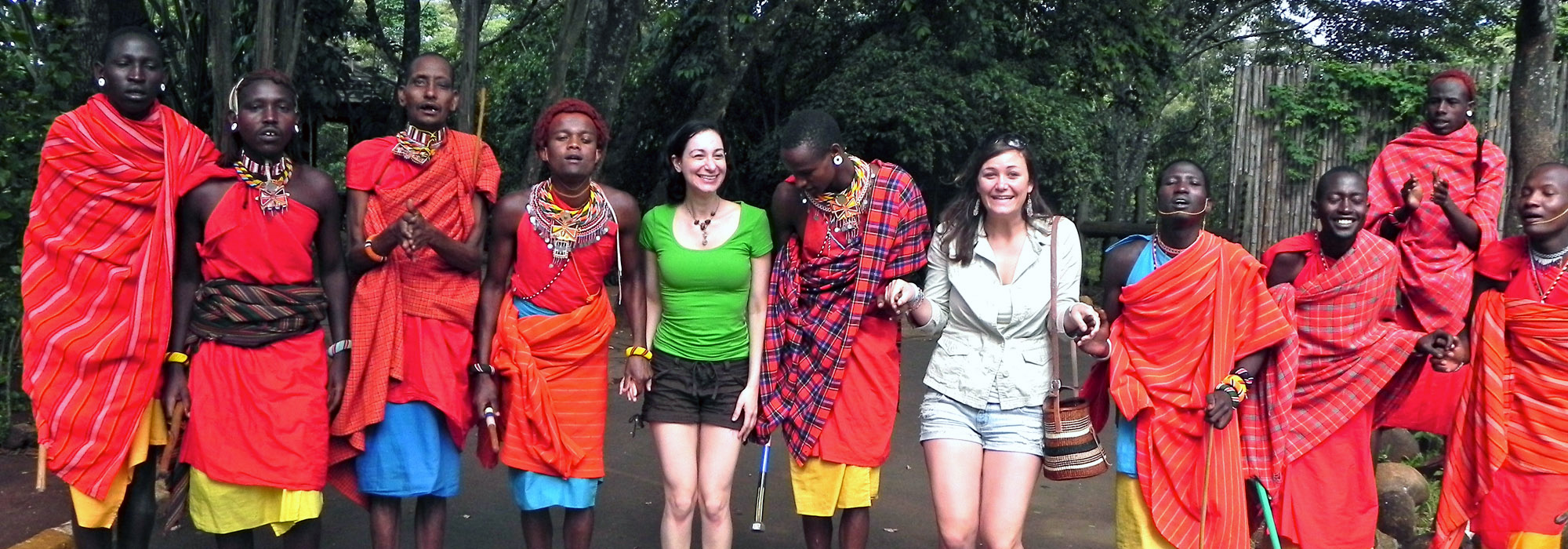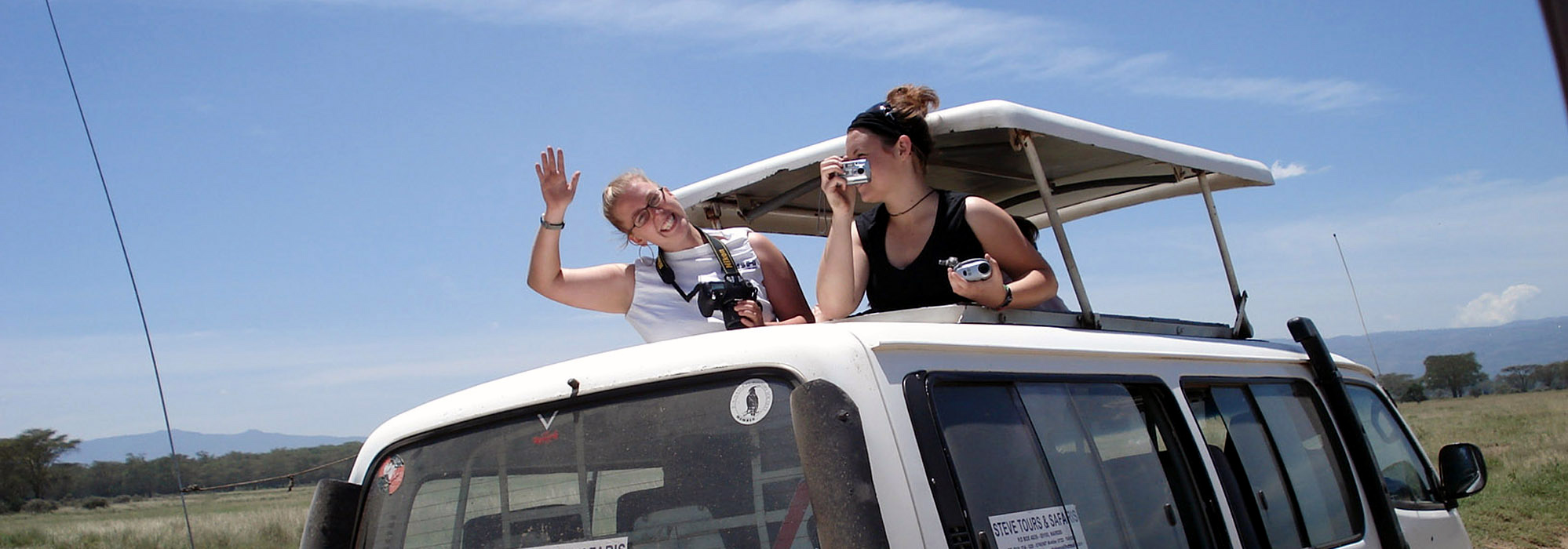KENYA
Nairobi
Nairobi, the capital and largest city in Kenya, is the country’s principal economic, administrative and cultural center. Situated midway between Johannesburg and Cairo, the city also serves as a commercial center for all of East Africa. In 1972 and 1976, Kenya donated land for the construction of the United Nations Environment Program and United Nations Center for Human Settlements headquarters, helping to make Nairobi a major diplomatic post in Africa.
Nairobi was once frequented by the pastoral Masaai tribespeople. The city’s modern history began in the 1890s as a stop on the British-built Mombasa-to-Uganda railroad. From 1899 to 1905 it served as a British provincial capital, and in 1905 Nairobi became the capital of the British East Africa Protectorate. Today, it is one of Africa’s largest and fastest-growing cities with modern skyscrapers, outdoor cafes, bars, bookstores and western-style hotels.
Kenya’s economic growth is not evenly distributed. As a result, it is common to see expensive mansions overlooking the poor slums.
Nairobi is considered the educational and cultural center in Eastern Africa. The University of Nairobi, United State International University and Kenya Conservatory of Music are located here. The National Museum of Kenya, which is known for its display of early humans, is one of the finest in Africa. Other points of interest include the Parliament, Law Courts, City Hall, McMillan Memorial Library, the busy Municipal Market and nearby bazaar, Kenya National Theater and Sorsbie Art Gallery. Within a 20-minute drive of Nairobi are some of Kenya’s largest national parks and big game reserves.
Kenya
Kenya, a republic in East Africa, is a member of the Commonwealth of Nations. The country gained its independence from British rule in 1963, and became a self-governing republic in 1964. The 2013 census estimated the country’s population at over 44 million people, with one of the largest population growth rates in the world. Unlike most other African countries that were once colonized by a European power, the population of Kenya consist mostly of black Africans. Arabs, Asians and Europeans together constitute less than one percent of the total population. Most black Africans associate themselves with specific tribes, many of which have their own unique language. However, the country’s two official languages are English and Swahili.
Unlike neighboring countries, Kenya has a relatively cool climate with little or no extremes. The moderate temperatures attract a multitude of birds and big game, making Kenya the most diverse wildlife refuge in Africa. Conservation of wildlife within reserves has thus received high priority. Nearly 12 percent of the total land is classified as parks, game reserves, and other managed areas, although only 6.2 percent is strictly protected. There are 107 (2001) threatened species in Kenya. Threatened habitats include the slopes of Mount Kenya and coastal forests. Efforts are under way to restore the endangered African elephant and black rhino populations, and an aggressive campaign has been waged against poachers. Five biosphere reserves have been recognized under the United Nations Educational, Scientific, and Cultural Organization (UNESCO) Man and the Biosphere Program. Kenya’s most notable natural features are Lake Victoria and the Great Rift Valley — likely the birthplace of the human species.
Kenya continues to struggle with many of the challenges that plague third world countries. Its unemployment rate is over 40%, and 43% of its population lives below the poverty line. The life expectancy is under 64 years and infant death rate is 6.8%. As with all African countries, Kenya is facing an AIDS epidemic. More than 2 million people (5.9% of the population) are HIV positive. With all of these issues, Kenya continues to receive humanitarian aid from the West. Despite the challenges Kenya faces — many stemming from the days as a British colony — its people continue to forge ahead. Kenya is one of the most progressive and fastest-growing countries on the continent of Africa.
QUICK FACTS
- Population of Kenya: 44 million
- Population of Nairobi: 3 million
- Official Language: Swahili and English
- Currency: Kenyan Shilling (KES)
- Local time in Nairobi: GMT+3
- Low temp in Nairobi: July: 69°F
- High temp in Nairobi: February: 76°F







